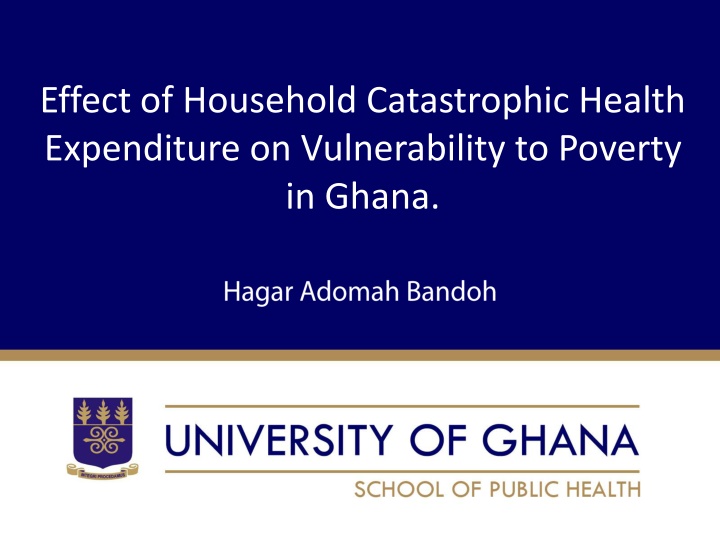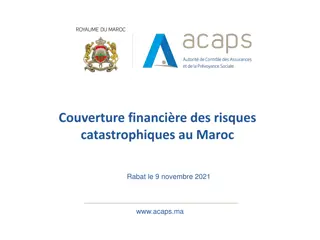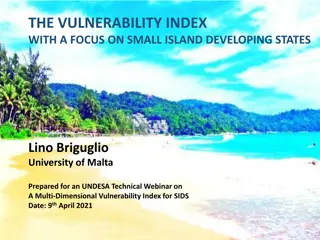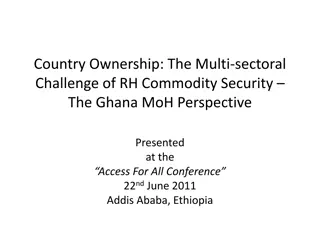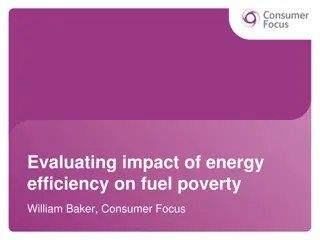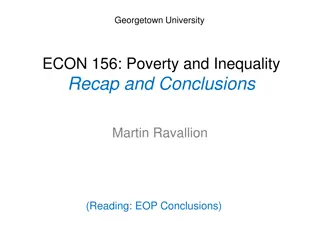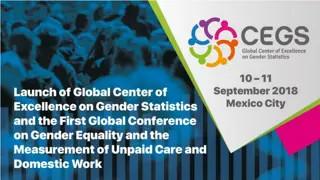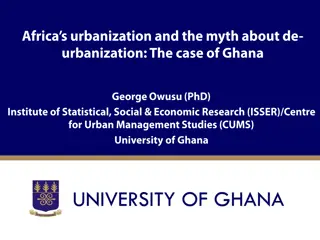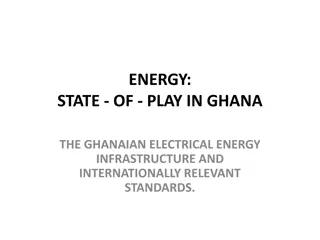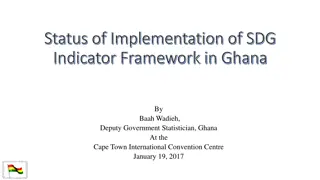Impact of Catastrophic Health Expenditure on Poverty Vulnerability in Ghana
Studying the effect of catastrophic health spending on poverty vulnerability in Ghana, highlighting the link between health shocks and poverty risks. Analyzing data from a quantitative study to estimate the impact on household wellbeing and poverty levels.
Download Presentation

Please find below an Image/Link to download the presentation.
The content on the website is provided AS IS for your information and personal use only. It may not be sold, licensed, or shared on other websites without obtaining consent from the author.If you encounter any issues during the download, it is possible that the publisher has removed the file from their server.
You are allowed to download the files provided on this website for personal or commercial use, subject to the condition that they are used lawfully. All files are the property of their respective owners.
The content on the website is provided AS IS for your information and personal use only. It may not be sold, licensed, or shared on other websites without obtaining consent from the author.
E N D
Presentation Transcript
Effect of Household Catastrophic Health Expenditure on Vulnerability to Poverty in Ghana.
Outline Introduction Objectives Methods Results Conclusion Recommendation 2
Poverty Facts > 1 billion people live on less than a dollar a day. 75% of the world s poorest countries are in Africa, with Sub-Saharan Africa having the highest index of extreme poverty. Poverty headcount for Ghana 24%, 78% in rural areas. 8.4% of Ghanaians live in extreme poverty. 3
Introduction Vulnerability to poverty is a more recent concept which looks at the ex-ante probability of a household of becoming poor, irrespective of them being currently poor or not. Mainly results from shocks (idiosyncratic or covariate). Health shocks affect wellbeing, especially when it comes with catastrophic spending. 4
This study sought to estimate the effect of catastrophic health expenditure on vulnerability to poverty among households in Ghana. 5
Cross-sectional quantitative study Data Source GLSS 6 (2012/13) - 16,772 households. WHO approach by Ke Xu (2005) and Proportionality of income approach at 5% and 20% threshold - Catastrophic health expenditure. Chaudhuri s econometric model at 50% threshold - Vulnerability to poverty. Multivariate Regression Analysis (Probit model) to estimate the effect of CHE on vulnerability to poverty. 6
Table 4.2: Incidence of catastrophic health expenditure Thresholds (%) 5 10 20 40 Notes: ( ) represents percentages of households incurring catastrophic health expenditure. WHO Proportionality of income approach 2,525 (25.55) 1,566 (15.34) 956 (8.84) 617 (5.24) capacity to pay approach 2,347 (24.96) 958 (10.18) 272 (2.87) 44 (0.45) 7
Results 2 Table 4.5 Regression Results Vulnerability CHE_5% CHE_20% Age Household Size Gender Female Male Education None Primary Secondary Tertiary Employment Unemployed Employed Health Insurance Uninsured Insured 5% threshold 20% threshold Coefficient (95% CI) 0.234 (0.161, 0.306) -0.001 (-0.003, 0.000) 0.307 (0.295, 0.319) Ref 0.225 (0.164, 0.285) Ref -0.550 (-0.613, -0.488) -3.828 (-4.188, -3.467) 0 Ref -0.059 (-0.614, 0.496) Ref -0.167 (-0.223, -0.111) P-value <0.001 0.100 <0.001 <0.001 <0.001 Coefficient (95% CI) P-value 0.121 (-0.078, 0.319) -0.001(-0.003, 0.000) 0.305 (0.293, 0.317) Ref 0.222 (0.161, 0.283) Ref -0.560 (-0.622, -0.498) -3.841 (-4.202, -3.479) 0 Ref -0.560 (-0.609, 0.497 ) Ref -0.176 (-0.231, - 0.119) Ref -0.095 (-0.244, 0.054) Ref 1.191 (1.044, 1.338) 1.143 (0.995, 1.290) 1.360 (1.210, 1.509) 1.222 (1.078, 1.367) 0.919 (0.773, 1.065) 1.107 (0.959, 1.255) 1.159 (1.010, 1.308) 1.544 (1.392, 1.695) 1.700 (1.543, 1.857) 0.235 0.127 <0.001 <0.001 <0.001 0.835 <0.001 0.841 <0.001 Disability Not disabled Disabled Region Greater Accra Western Region Central Region Volta Region Eastern Region Ashanti Region Brong Ahafo Region Northern Region Upper East Region Upper West Region Ref -0.115 (-0.264, 0.035) Ref 1.182 (1.034, 1.329) 1.136 (0.988, 1.283) 1.349 (1.199, 1.498) 1.219 (1.074, 1.364) 0.909 (0.763, 1.057) 1.096 (0.948, 1.244) 1.136 (0.987, 1.285) 1.549 (1.398, 1.700) 1.714 (1.557, 1.871) 0.132 0.211 <0.001 <0.001 8
Results 3 The vulnerability headcount was 34% using the upper poverty line compared to the estimated observed poverty rate of 24.2%. Catastrophic health expenditure was significantly associated with vulnerability. An increase in threshold resulted in decrease in significance. Household characteristics such as socioeconomic status, household size, educational level and health insurance significantly influenced vulnerability. 9
Recommendations Poverty reduction strategies have focused on current poverty but to ensure poverty targets are met, a wider bracket is needed to include those that are likely to be poor. Increased government funding for the health sector and instituting complementary policies to improve healthcare delivery. Social protection measures: to provide safety nets and social insurance against covariate and idiosyncratic shocks. Further research into vulnerability: Surveys should include modules on risks, shocks and coping mechanisms of households. 10
